If you’ve ever seen a bee with no stinger, and wondered why it’s still alive and flying, It’s because it’s probably a hoverfly. Hoverflies have the same markings as bees and some wasps, and even mimic certain behavioural patterns associated with bees. So what are hoverflies? and why are they so important?
Hoverflies What Are They And Why Are They Important Video
What Are Hoverflies?
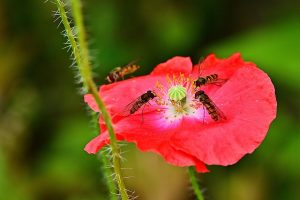
Hoverflies are a species of fly found everywhere in the world apart from Antarctica. They are of the family Syrphidae and are also known as syrphid flies and flower flies.
Do Hoverflies Sting?
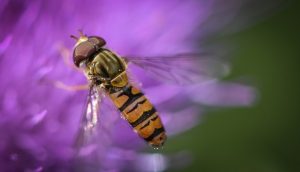
Although they like to mimic bees and wasps, hoverflies don’t have a stinger. So no they don’t sting, on occasion they are attracted to sweat, but they can’t sting. So although they are insects that look like bees, but are not actually bees.
Hoverflies Are Insects That look Like Bees But Are Not
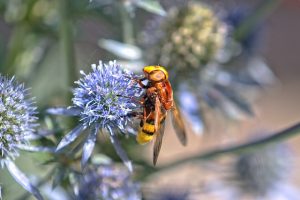
The easiest way to actually distinguish between bees and hoverflies is bees have 4 wings and hoverflies have only 2. Couple this with the lack of a stinger on hoverflies and you have a winner.
Hoverfly Identification

There are over 6,000 different types of hoverflies throughout the world, with around 260 found in the UK. They are found on every continent except Antarctica so as you can imagine there are many variations in colour etc… The majority are a combination of yellow and black stripes but in varying widths and shades.
There are orange and black stripes, black and white stripes, all black varieties and that’s not including size variations. Some are elongated and thin, others are short and fat, the list goes on. So the surest way to identify these fascinating creatures is by the way they fly around flowers (hovering) and the fact they only have 2 wings.
Whilst on the subject of hovering, I should point out that hovering is an important part of the mating ritual. Females judge the males viability as a mate on his ability to hover. How long, how straight, can he hover backwards, these are all considerations in picking the right male for breeding healthy young.
Why Are Hoverflies Beneficial?
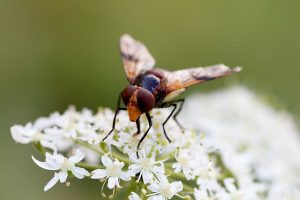
They feed on nectar and in so doing spread pollen from flower to flower thus pollinating the flowers as they feed. A garden full of hoverflies will deter many pests just due to the sheer weight of numbers. Plus their larvae are voracious consumers of aphids.
How To Get Rid Of Hoverflies
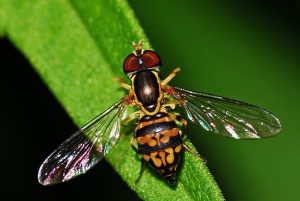
Because of the many benefits having hoverflies in your garden, I can’t see why you’d want to get rid of them, but if you do here’s a few suggestions. Use a fan- Because they hover, strong winds or the draught from power fans will keep them away.
Use Citronella Candles

The strong smell of citronella is supposed to keep flying pests away.
Use a Fly Trap

This is a bit drastic to my mind but it will keep numbers down. The easiest and cheapest fly trap consists of mixing sugar with water in a bowl, covering with cling film. Poke a few holes in the cling film and the flies will get in but won’t be able to get out.
Make a Repellent Spray
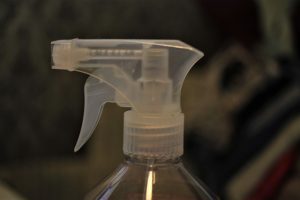
Using peppermint oil, eucalyptus oil, washing up liquid, and oil. Spray this mixture mixed with water around the area you wish to keep them away from.
Citrus Peel

Place citrus peel around the area the flies are congregating and they will disperse.
Use Fly Paper
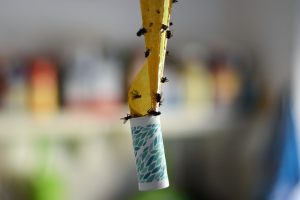
Place fly paper around the area you want to free from the perceived pest.
Strategically Place Plants To Lure Hoverflies Away

This is by far the most satisfactory solution in my opinion, we need to work with nature and encourage beneficial creatures to our gardens. So if the problem is they are flying around the area you sit or eat, just plant some plants that attract them further away from your seating area.
How To Attract Hoverflies To Your Garden
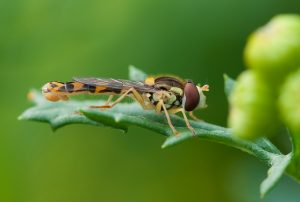
To my mind this is the most important piece of advice on this post. Organic gardening relies on attracting beneficial insects to your garden. So we need to know how to attract them, below is a few of the plants that hoverflies are attracted to, just as a guide.
Plants That Attract Hoverflies
The first couple are plants that I have observed hoverflies flocking to in my garden, the rest are from my research.
Poached Egg Plants Attract Hoverflies
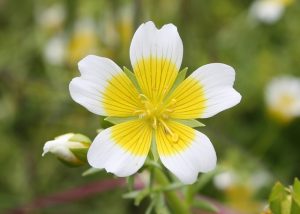
The poached egg plant (Limnanthes douglasii) otherwise known as meadowfoam is an annual flower that spreads its seed so prolifically that you’ll think it’s a perennial. As the name implies, the flower resembles a poached egg or more accurately a fried egg. Flowering from very early Spring up until mid Summer, the poached egg plant will be alive with all types of pollinators as soon as it blooms.
Information on poached egg plant companion planting can be found here.
Chamomile Attracts Hoverflies
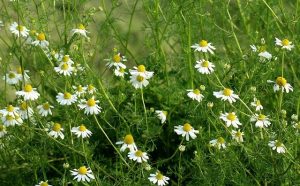
With its small, daisy like flowers and fern like leaves chamomile (chamomilla) is a useful herb to have in the organic garden. It will attract many pollinators. The Roman Chamomile is by far the best type to grow.
Michaelmas Daisies Attract Hoverflies
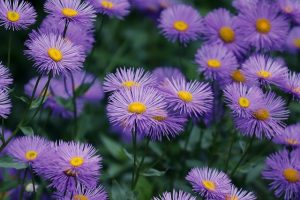
Commonly known as asters, Michaelmas daisies are a late flowering plant that will attract many pollinators in large numbers.
Apple Blossom Attracts Hoverflies
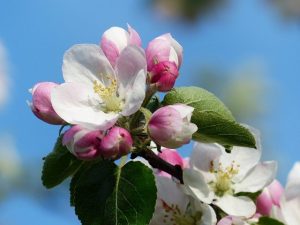
If you’ve been paying attention, you might notice a pattern forming here. Hoverflies prefer flowers with easy access, apple blossom and pear blossom are an idea flower for hoverflies to feed on.
Wild Carrots Attract Hoverflies
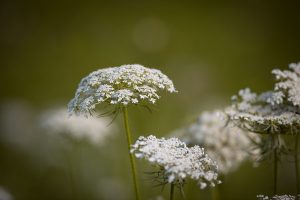
All umbellifers are attractive to hoverflies, this includes parsley, coriander (cilantro), fennel, cow parsley, hogweed, and more. To find out more about umbellifer flowers follow this link to the first nature webpage.
French Marigolds Attract Hoverflies

A very useful ally for the organic gardener, French marigolds (tagetes) not only repel harmful nematodes at root level, they also attract many pollinators. To find out more about marigold companion planting click here.
Calendulas Attract Hoverflies
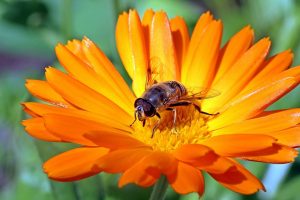
Another easy access flower for hoverflies, calendula commonly known as pot marigold attract many pollinators including hoverflies.
These next 2 are useful for late pollinators which includes solitary bees, and hoverflies.
Ivy Attracts Hoverflies
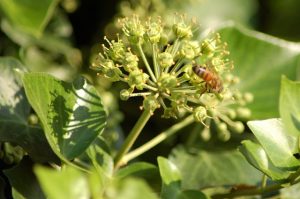
This common garden plant, considered a pest by some, is another great ally for the organic gardener. The stems grow thick and strong, ideal for small birds to nest in, creating a safe haven from predators. Once in flower (late September through to November), ivy provides pollen for late season feeders.
Dandelions Attract Hoverflies
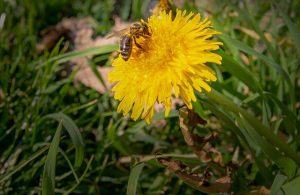
Another early and late flowering plant that most consider to be a weed, the dandelion is in my opinion, very under rated. It has deep tap roots that release nutrients lost to many other plants, flowers throughout most of the year, and provides pollen to many hoverflies included. To find out more about companion planting dandelions follow this link.
This is just a short list of plants that will attract these useful allies to your garden, they will also turn up if you have a serious aphid problem. They tend to lay their eggs close to aphid infestations to ensure a reliable food source for their young.
I’ve tried to vary the images in this post to show some of the variations in colour and size of these interesting little creatures. To see more just do an image search and I’m sure you’ll be surprised at the differences between varying species. I believe some factors have an impact on size and colour.
Factors like shapes and colours of other insects in that particular area. Whether local wasps are elongated, or bees are more black than yellow etc… Nature is full of variety and to my mind that’s what makes it so interesting.
Let me know in the comments on the types of hoverflies found in your area.

